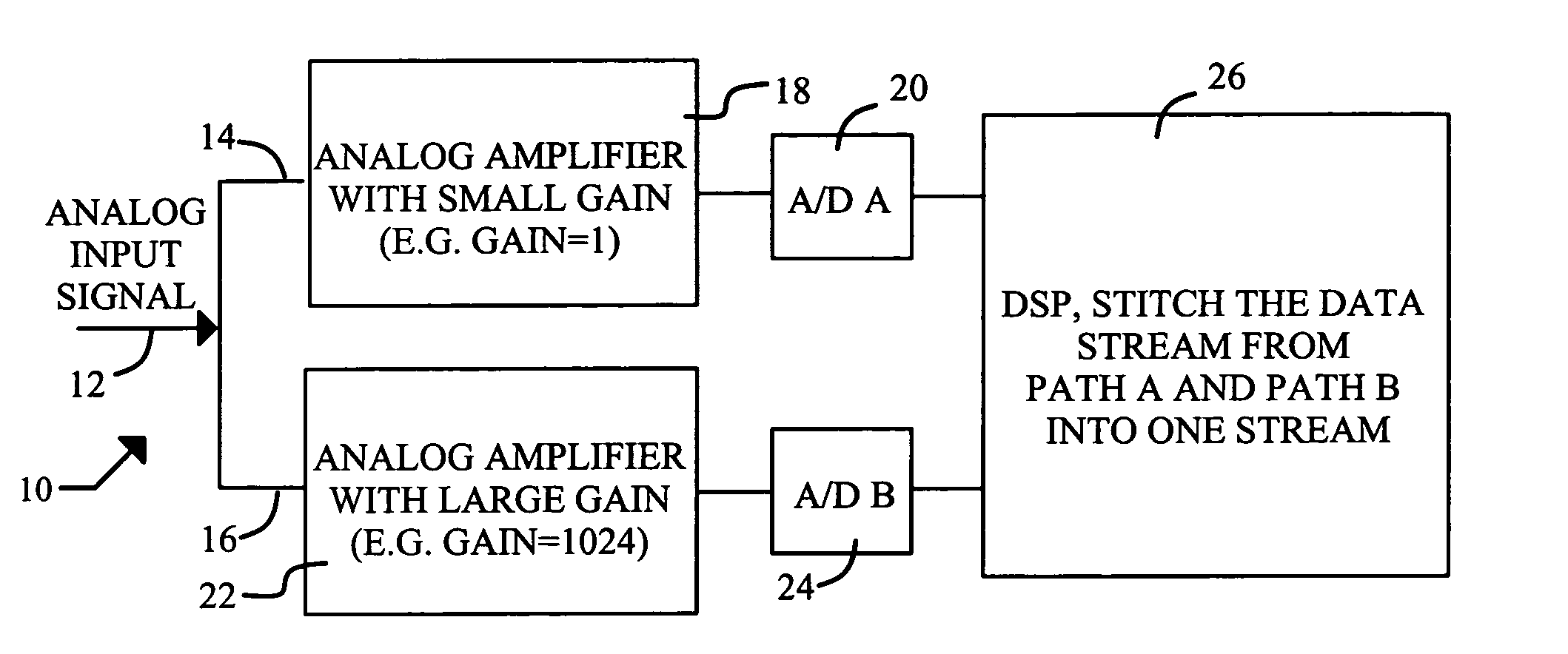Cross-path calibration for data acquisition using multiple digitizing paths
a data acquisition and digitizing path technology, applied in the field of high dynamic range measurement method and system, can solve the problems of not being able to achieve the optimal range, affecting the accuracy of data acquisition, and difficult to get all input ranges to their suitable value, etc., to achieve accurate and reliable measurements, reduce or complete elimination of input range settings, and achieve accurate voltage measurement
- Summary
- Abstract
- Description
- Claims
- Application Information
AI Technical Summary
Benefits of technology
Problems solved by technology
Method used
Image
Examples
case 2
[0039]Case 2 shows that the signal is first in Region B, then it rises to “Out of Region B”. Using the method described above, when the signal is in Region B, Ka and Ba are estimated. Then, Ka and Ba are used to calculate Ya, once they enter the “Out of Region B”. This can be done in real-time while data is being acquired.
case 1
[0040]Case 1 is more complicated than Case 2, because the data points that are used to estimate Ka and Ba occur after the transition. The cross-channel calibration adjustment must be applied to the HISTORICAL data series, i.e., the old data. This can be done because data has been acquired. The software can retrieve data to the extent necessary to re-apply the Ka and Ba to the data that has been acquired.
[0041]The previous discussion uses a measurement channel with two A / D paths as an example. The concept can be expanded to measurement systems which employ more than two A / D paths. Regardless of the number of paths, the cross-calibration method uses the measurement values in the paths with smaller input ranges (i.e., larger gains) to calibrate the data values from the paths with larger input ranges (i.e., with smaller gains). FIG. 8 shows this expansion of the invention to include three A / D paths, with each path having an ADC 54, 56 and 58 and an amplifier 60, 62 and 64 with a unique ...
PUM
 Login to View More
Login to View More Abstract
Description
Claims
Application Information
 Login to View More
Login to View More - R&D
- Intellectual Property
- Life Sciences
- Materials
- Tech Scout
- Unparalleled Data Quality
- Higher Quality Content
- 60% Fewer Hallucinations
Browse by: Latest US Patents, China's latest patents, Technical Efficacy Thesaurus, Application Domain, Technology Topic, Popular Technical Reports.
© 2025 PatSnap. All rights reserved.Legal|Privacy policy|Modern Slavery Act Transparency Statement|Sitemap|About US| Contact US: help@patsnap.com



